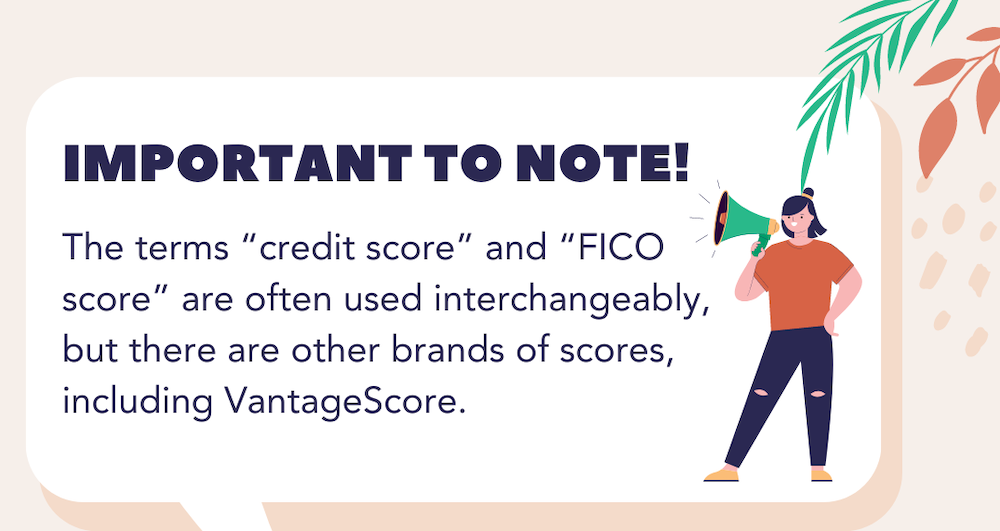How credit scores work can be a mystery. FICO is the most popular credit scoring model used by 90% of top lenders.
While the people over at FICO do not release exactly how credit scores are calculated – They do give some insight into the main components making up a FICO score.

How credit scores work?
A FICO credit score is a three-digit number that lenders use to assess your creditworthiness. It is calculated based on information in your credit report, which includes your payment history, the amount of debt you owe, the length of your credit history, and the types of credit you have.
FICO scores range from 300 to 850, with a higher score indicating a lower risk of default. A score of 720 or above is considered to be good, while a score of 800 or above is considered to be excellent. Changes were made to the way FICO scores are calculated in 2014.
The newest edition, FICO Score 9, does not include paid collection accounts and it will differentiate medical collection accounts from non-medical debt. Unfortunately, it is up to each lender to implement the newest scoring model and as of yet, most lenders continue to use the FICO 8 Scoring model.
Here are the five factors that are used to calculate your FICO 8 score:
1. Payment History – 35%
Whether you pay obligations on-time or late is the greatest factor impacting credit scores. Payment history makes up 35% of your overall credit score. Having one late payment could take as much as 110 points off your credit score. A timely payment history can mean the difference between poor credit scores, good credit scores, or excellent credit scores.
There are several strategies to recover from late payments but instead, try to make timely payments, even if just the minimum payment, to maximize your credit score points.
2. Amount Owed – 30%
The amount owed is the next major component, making up 30% of your credit score. The amount of revolving debt owed in comparison to your available credit limits is calculated on an individual account basis as well as an overall basis.
Here’s the formula for calculating credit utilization ratio:
Credit utilization ratio = (Total debt / Total available credit) x 100)
For example, if you have a total debt of $5,000 and a total available credit of $10,000, your credit utilization ratio would be 50%.
Experts have stated the ideal credit utilization ratio is 30% or below. This means you should only be using 30% of your total available credit. However, borrowing as little as 10% of your available credit limit has the potential to suppress your credit score. Ideally, using 7% or less of your available credit limit may be optimal.
FICO released a study a few years ago stating consumers with the highest credit scores use 7% or less of their available credit limits. With this in mind, steer clear of maxing out one card for all purchases. It would be better to spread smaller debt amounts over several cards rather than max out one credit account. Your total debt weighs heavily on your credit score.

Courtesy: myFICO.com
3. Length of Credit History – 15%
The length of credit history makes up 15% of your credit score. This is why consumers with longer credit histories are able to achieve those seemingly elusive 800 and above credit scores.
Typically, in order to achieve higher credit scores, you must have “OPEN” accounts for at least 7 years and the accounts must be in good standing with an excellent payment record. You can actually raise your credit score by keeping accounts open past 7 years. There may be accounts that have been unused for several years but remain on your credit report.
Do not close old credit accounts, leave them alone. Ideally, let older accounts remain open with a small amount of activity that is paid in full every month.
4. Hard Inquiries and New Debt – 10%
Hard inquiries along with new debt account for about 10% of your score. Opening many credit accounts at one time signals to creditors you may be experiencing financial difficulty. The credit scoring model will ding your credit score and view you as high risk for creditors.
The exception to having lots of hard inquiries is when you are rate shopping for a big purchase such as a mortgage or automobile loan.
- All mortgage hard inquiries made within a 45-day window will be recorded on your credit report as a single hard inquiry.
- All auto loan inquiries made within a 14-day window will also be recorded on your credit report as a single hard inquiry.
5. Credit Mix – 10%
The type of credit accounts you have makes up 10% of your credit score. Your credit score gets a boost when show you can manage multiple types of debt such as a mortgage loan; automobile loan; line of credit and credit cards. Installment loans such as an auto loan hold more weight than revolving debt such as a credit card.
How to get a FICO Score
You may already have access to a free FICO score on your credit card statement or banking app. If you don’t have access to a free FICO score, you can purchase one from myFICO.com. They offer three tier plans:
- Basic ($19.99/monthly) – Includes 1 Credit Bureau Report and FICO Scores from Experian that updates once a month
- Advanced ($29.99/monthly) – Includes 3 Credit Bureau Reports and FICO Scores that update every three months
- Premier ($39.99/monthly) – Includes 3 Credit Bureau Reports and FICO Scores that update once a month
If you’re preparing for a big purchase, like a car or home, it might be worth it to subscribe for one month, check your reports and then cancel. That way, you’ll be walking into the lender’s office without any surprises.
Here are some of the benefits of getting a free or paid FICO score:
- You can track your credit progress over time. By checking your FICO score on a regular basis, you can see how your credit is improving or declining. This can help you make changes to your credit habits to improve your score.
- You can compare your FICO score to the average FICO score for your age and credit history. This can give you a good idea of where you stand in terms of creditworthiness.
- You can see if there are any errors on your credit report. If you find any errors, you can dispute them with the credit bureaus.
If your FICO scores are low you can take steps to improve your creditworthiness and if it’s high you may be able to use it as leverage to get the best rates and terms.
FICO vs. VantageScore
FICO is the older and more established model used by many lenders to assess creditworthiness. VantageScore is a newer model that was developed in 2006 by the three major credit bureaus (Experian, Equifax, and TransUnion). Both credit scoring models range from 300 to 850, with a higher score indicating a lower risk of default.
Many people may be familiar with the VantageScore model through the use of Credit Karma, a free website that allows users to check their credit scores and reports from two of the three major credit bureaus, TransUnion and Equifax. Discover more differences in FICO scores vs. VantageScores.
















